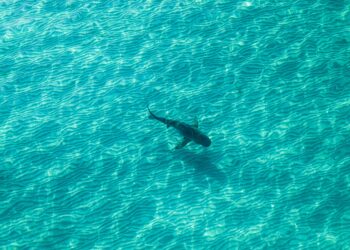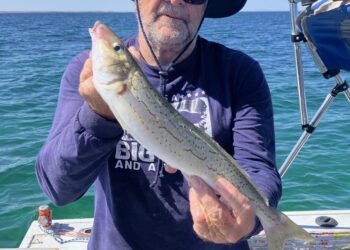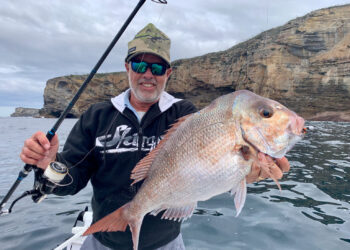
THE latest Fisheries Research and Development Corporation (FRDC) mulloway stock status report has re-classified the species from “overfished” to “depleted” in NSW.
The report shows commercial landings of mulloway in NSW steadily declined from almost 400 tonne in the mid-1970s to a historic low of 37 tonne in 2008–09. In 2019, the total state-wide commercial catch was 48 tonne. The most recent estimate of the recreational harvest of mulloway in NSW was approximately 12,000 fish weighing an estimated 90 tonne during 2017–18.
Up until 2016-17, the NSW commercial mulloway fishery was based largely on juveniles with around 80 per cent of catch less than 700 millimetres – the approximate length at maturity for female mulloway in New South Wales. Since the early-2000s, the spawning potential ratio for mulloway in NSW has been consistently estimated to be below the threshold of 20 per cent, indicating that there may be a risk of recruitment failure or the ability of the stock to replenish itself.
In 2013, the NSW Mulloway Recovery Program was implemented to arrest the decline of the species. Management changes to the recreational fishery included an increase in legal minimum length from 450 to 700 millimetres and a 60 per cent reduction in the daily bag limit. Management changes to the commercial fishery included the above increase in legal minimum length (with bycatch allowances of fish between 450 and 700 millimetres for estuarine netting) and a 500 kilo trip limit for beach-hauling.
In 2016, a review of the mulloway recovery program management changes suggested that there had been some improvement in the mulloway population since it was first declared overfished in 2004/05, but it was still too early to tell if it was recovering. The review also revealed that the commercial possession limit of 10 fish between 45 and 70 centimetre fish had been breached in 25 per cent of observed commercial catches.
In 2018, the recreational bag limit was reduced further to one fish per person and the bycatch allowance for undersized fish in the commercial estuarine mesh net fishery was removed.
Despite these changes designed to reduce fishing mortality on both adult and juvenile parts of the stock, the FRDC report states that “measurable improvements are yet to be detected”.
More to come.




















